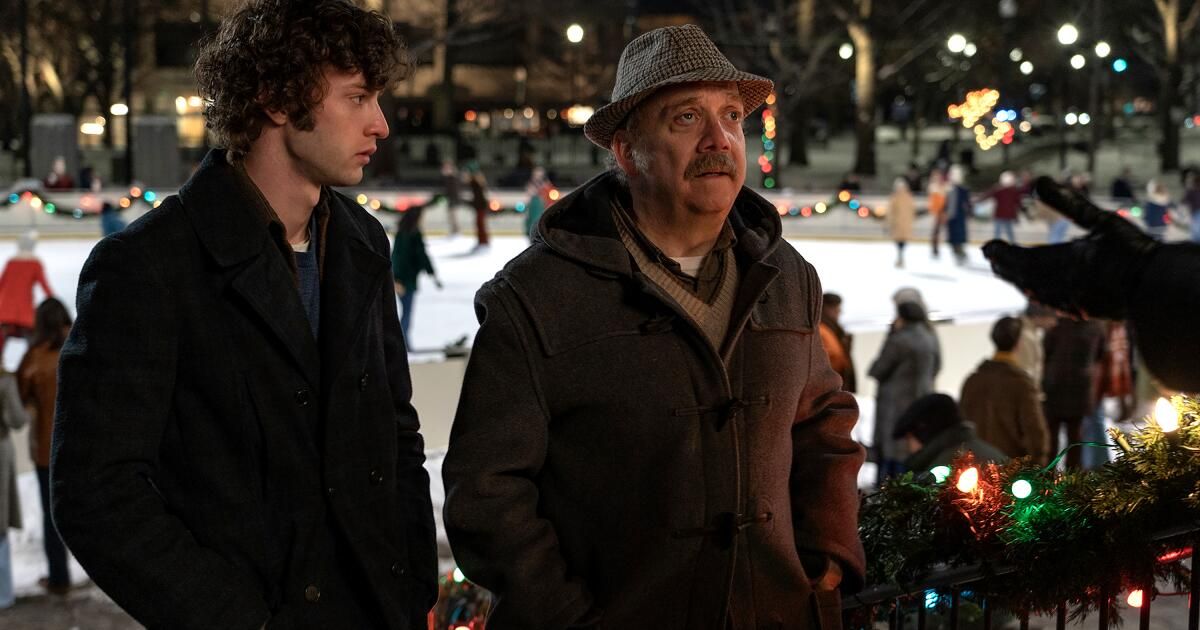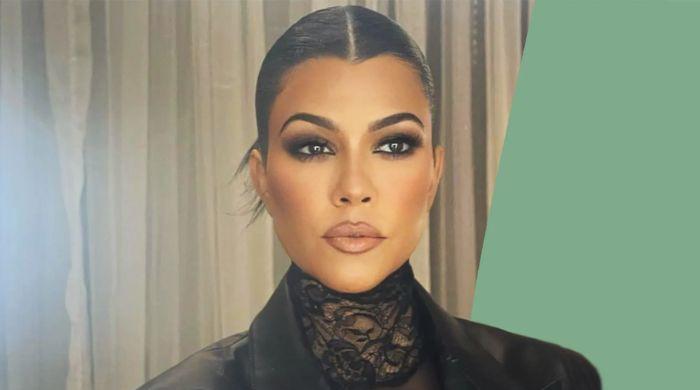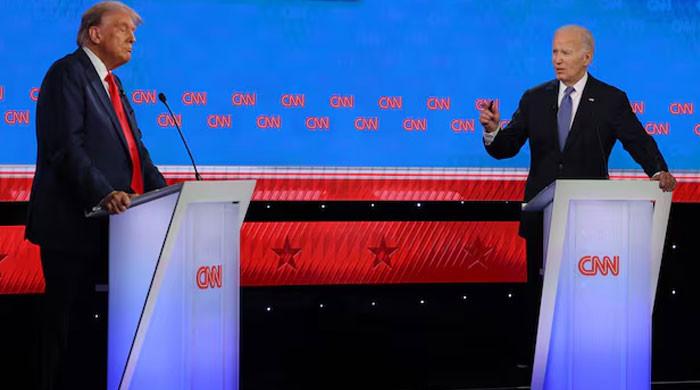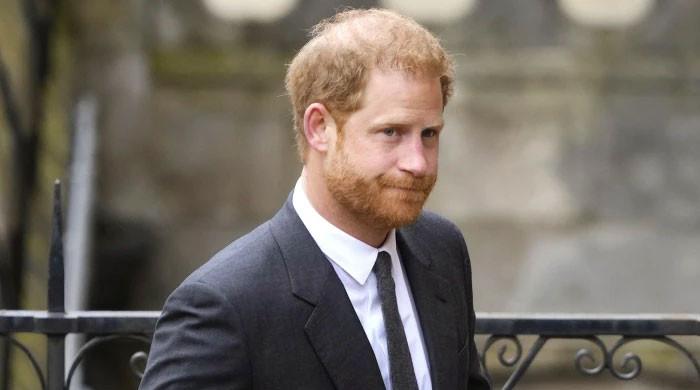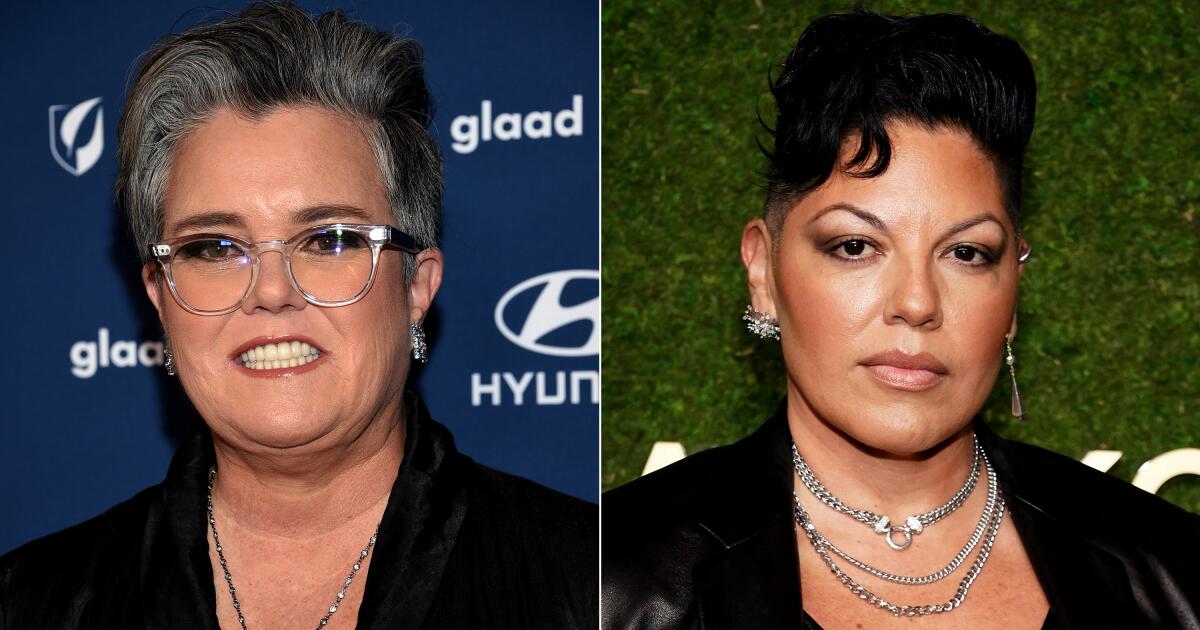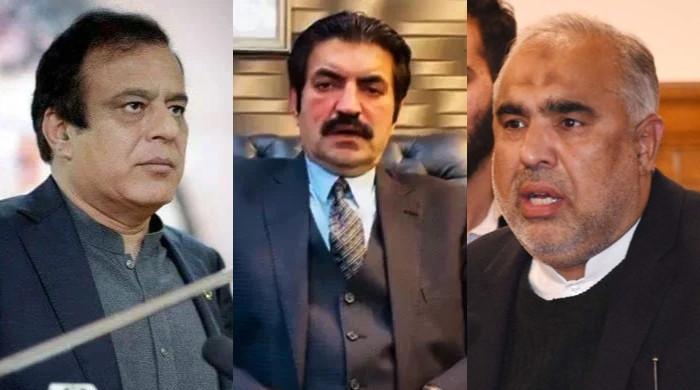Reducing an entire performance to one important, key scene for an actor is no easy task. The audience might expect it to be a bombastic speech, a tearful moment of anguish, or an angry tantrum. But when The Envelope spoke to some of the producers and directors behind the scenes of the films that generated Oscar nominations for lead actor and lead actress this year, it was all about the little moments: an argument over a picnic lunch; a bewildered expression that lasted 17 seconds; the surprising confidence of a teacher. Here's a look at those key moments, two of which could lead to an Academy Award on March 10.
Paul Giamatti, 'The Remains'
Set the scene: After Angus (Dominic Sessa) expresses his fears of becoming his institutionalized father, Mr. Hunham (Giamatti) reassures him that he will be his own man.
Why it is key: “Until now, [Paul’s] “He's been a very bitter man, but now he turns to this young man, sees what he's been through and throws him a life jacket,” says producer Mark Johnson. “He's basically saving this kid. It is a moment of generosity, but not obvious, and you may not even know what you just experienced, but in retrospect it is very powerful and subtle.”
Jeffrey Wright allows audiences to see beyond his anger and see the pain behind it, says “American Fiction” writer-director Cord Jefferson.
(FIGHT)
Jeffrey Wright, 'American Fiction'
Set the scene: During the book awards judging, Monk (Wright) and Sintara (Issa Rae) have an ideological debate about what it means to be a black artist.
Why it is key: “Playing a lovable grump is difficult; you can lose an audience if you go too far,” says writer-director Cord Jefferson. “Monk fights everyone from the moment the movie begins, and in the hands of a less talented actor that wouldn't work well. What regains favor with the audience is that you see underneath the anger that there is pain. There aren't a lot of moving parts in that scene, it's just a conversation, but it's simplified and you see the duality of Monk.”
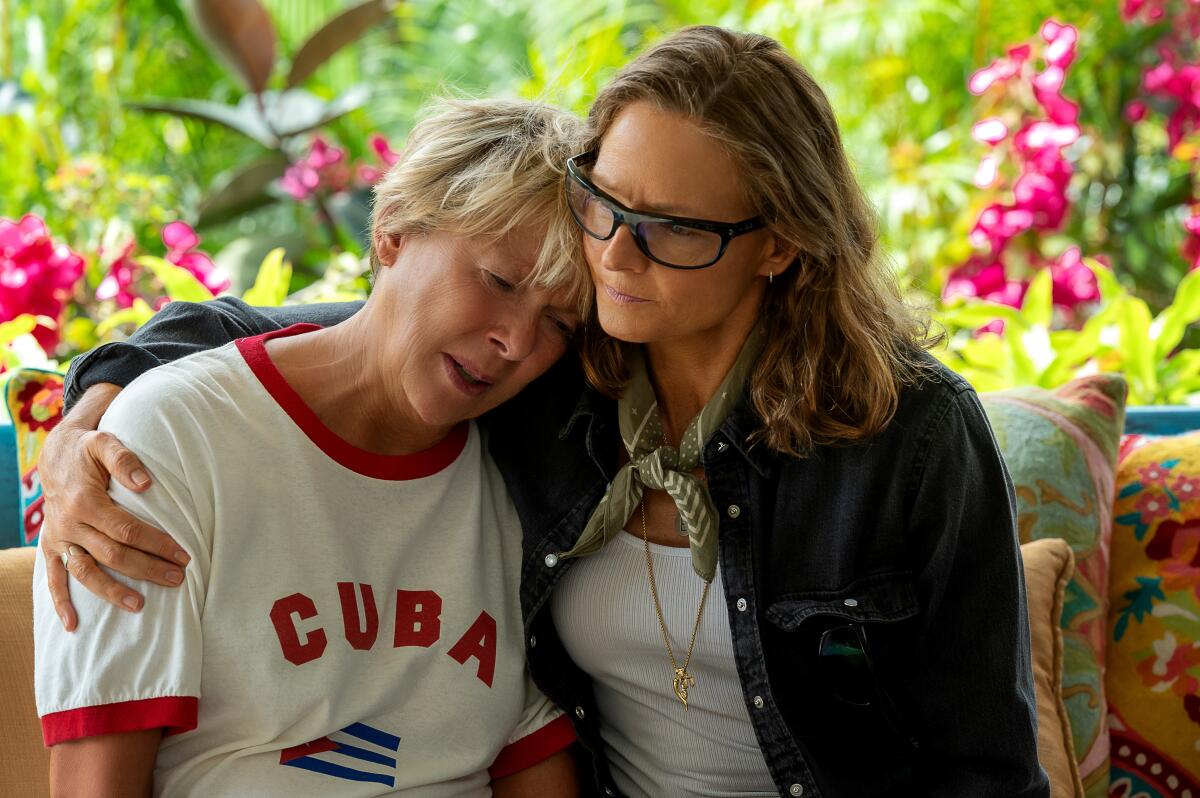
“The heart of 'Nyad' is the friendship between Bonnie and Diana,” directors Elizabeth Chai Vaserhelyi and Jimmy Chin say of the film's stars, Annette Bening and Jodie Foster.
(Kimberley French / Netflix)
Annette Bening, 'Nyad'
Set the scene: After four failed attempts at a record between Cuba and Key West, Bonnie (Jodie Foster) refuses to make another one, but Diana (Bening) won't hear a “no.”
Why it is key: “The heart of 'Nyad' is the friendship between Bonnie and Diana,” directors Elizabeth Chai Vaserhelyi and Jimmy Chin write in an email. “If 'Nyad' is a platonic love story, this is the breakup scene. Annette's performance is as striking as the true extent of her willingness to play Diana Nyad, flaws and all. “In this scene…we see the incredible skill and bravery of our actors in portraying women in all their complexity.”
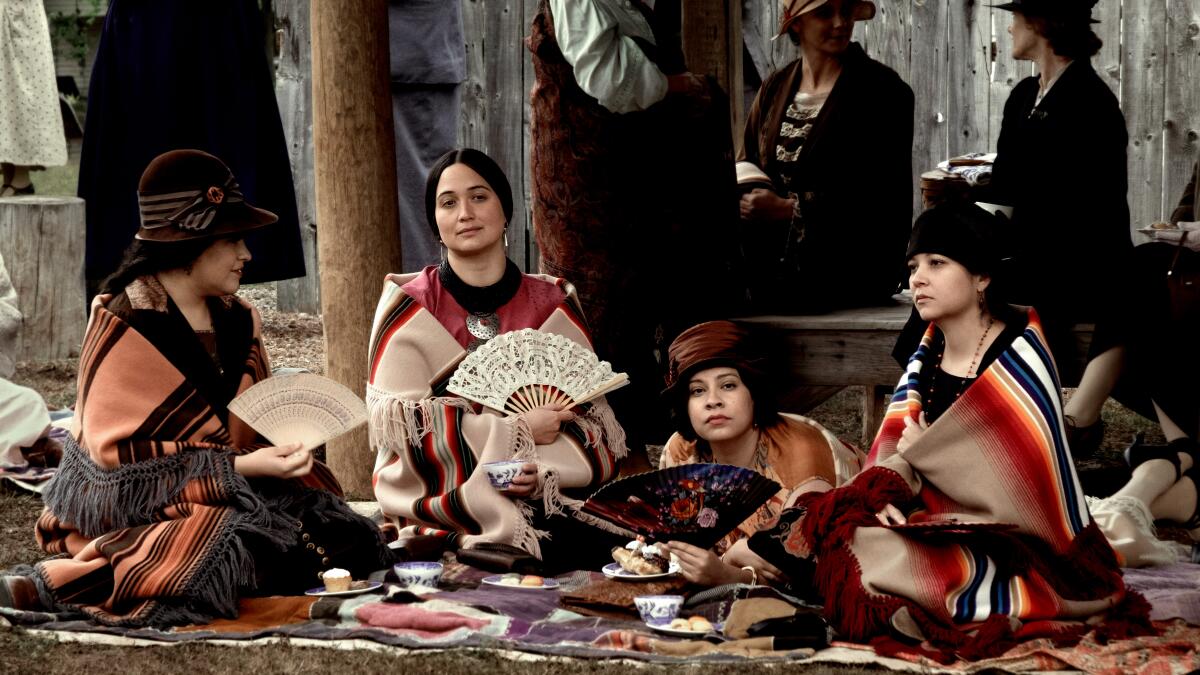
JaNae Collins, Lily Gladstone, Cara Jade Myers and Jillian Dion in “Killers of the Flower Moon.” The scene, the film's producers say, shows off Gladstone's “little subtleties” that “make her overall performance so rich and powerful.”
(Melinda Sue Gordon / Apple TV+)
Lily Gladstone, 'The Flower Moon Killers'
Set the scene: During a picnic after church, Mollie (Gladstone) and her sisters discuss Ernest's (Leonardo DiCaprio) prospects as a husband for her.
Why it is key: “In one scene, you see the expression of Lily's commitment as an artist to the Osage language and culture, while also choosing characters to show us that Mollie really loves Ernest, and it is a thoughtful love, a decision to marry him that will lead to tragedy. ” say producers Marianne Bower and Daniel Lupi in an email. “It may not be a big, flashy, emotional scene, but it's played with little subtleties that make her overall performance so rich and powerful.”
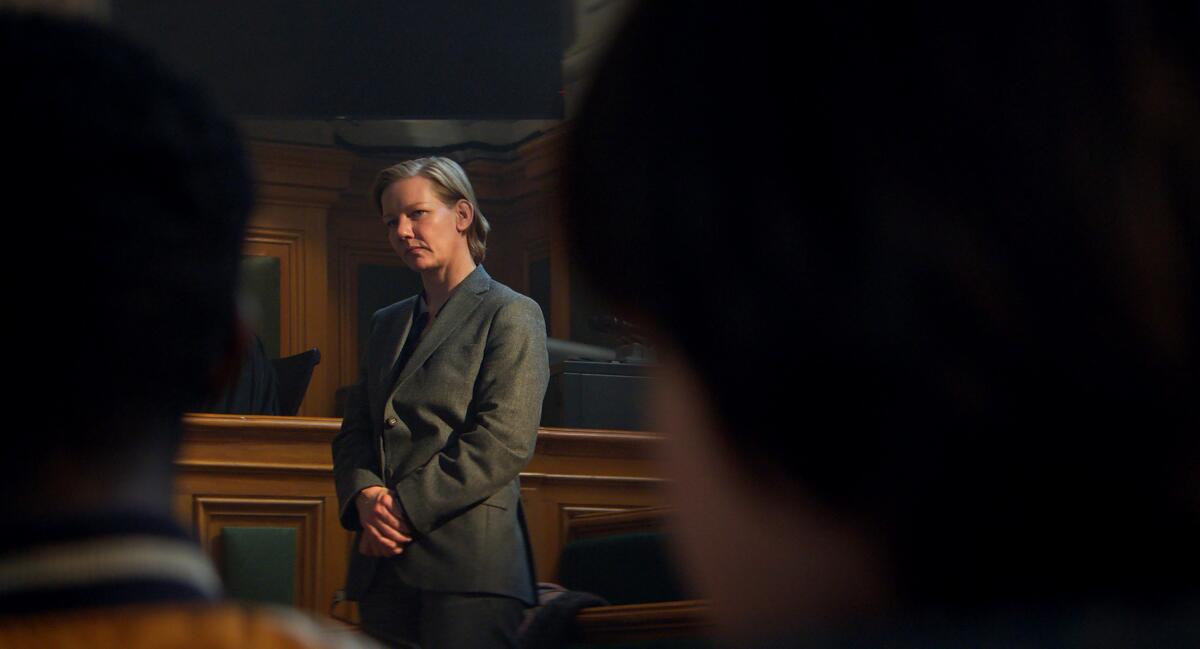
The screenwriter and director of “Anatomy of a Fall”, Justine Triet, highlights a scene in which Sandra Hüller finally breaks with the passivity of her character.
(Les Films Pelléas and Les Films)
Sandra Hüller, 'Anatomy of a Fall'
Set the scene: Sandra (Hüller) is being interviewed by her lawyer before her court appearance.
Why it is key: “It is the first scene in which Sandra breaks with the passivity that has characterized her until then,” says director Justine Triet (through translator Assia Turquier-Zauberman). “They are filming her and she tells us about her meeting with [her husband] Samuel and the decline of that relationship. It's a moment where we grasp her story and her skill as a storyteller. She has narrative skills, so that gives us a lot of layers of information…even on the edge of her emotion, she's still crafting the mythology of her.”
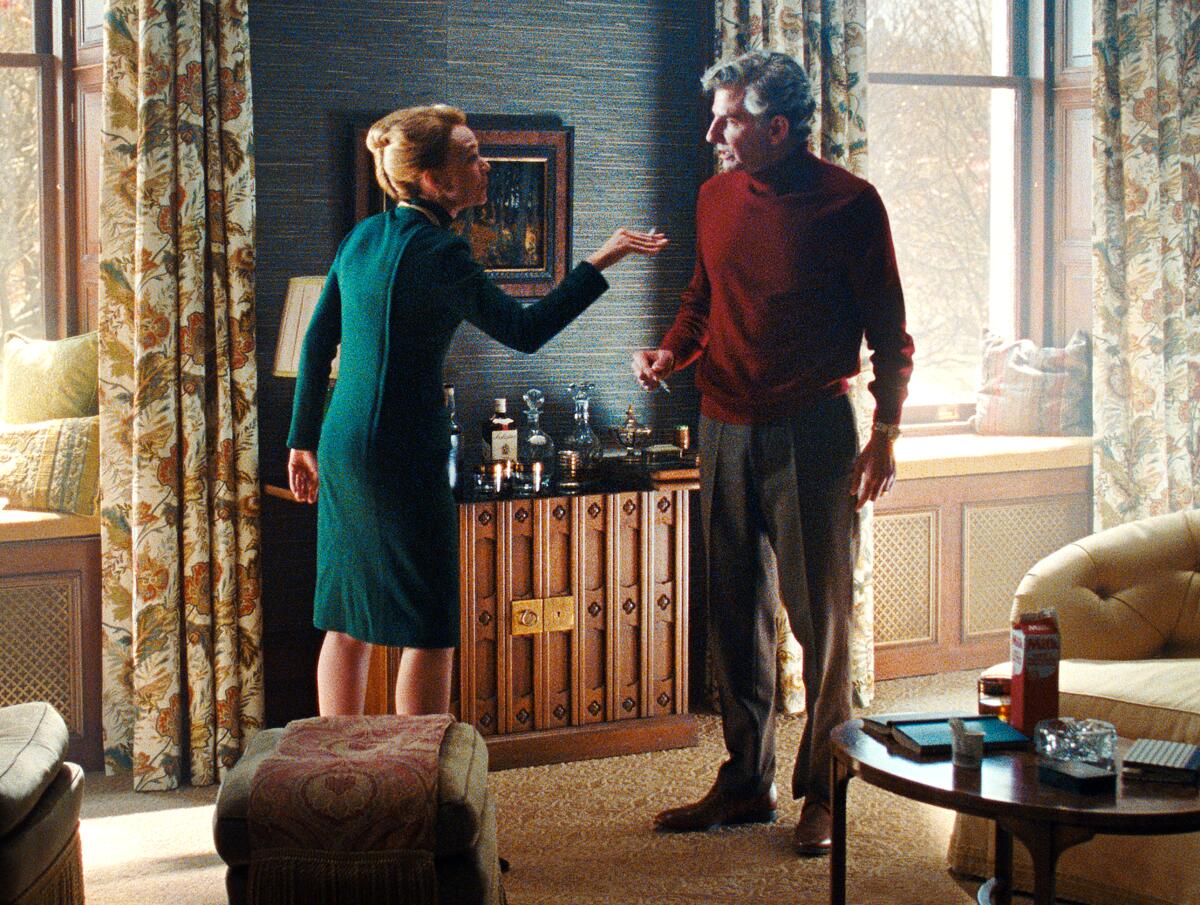
Carey Mulligan as Felicia Montealegre finally “sticks a pin in the pretense bubble and lets out all the anger” she's been bottling up over Lenny's (Bradley Cooper) indiscretions, says producer Kristie Macosko Krieger.
(Netflix)
Carey Mulligan, 'Master'
Set the scene: As Bernstein's family and friends gather for Thanksgiving, Felicia (Mulligan) and Lenny (Bradley Cooper) take stock of their relationship and marriage, and Felicia is determined to make Lenny understand the depth of her love. sacrifice and chaos that their lifestyle brings to their lives. together.
Why it is key: “The scene is the denouement of several previous scenes that reveal that Lenny has not kept his promise to Felicia to keep his increasingly indiscreet affairs away from their life together as a family,” producer Kristie Macosko Krieger writes in an email. “This is the point in 'Maestro' where Felicia sticks a pin in the balloon of pretense and lets all the anger out. Felicia is holding a lot of emotions in the audience up to this point. Carey's ability to allow us to feel these complex, hidden emotions throughout the film only to unleash all those feelings with the full force of her is amazing.”
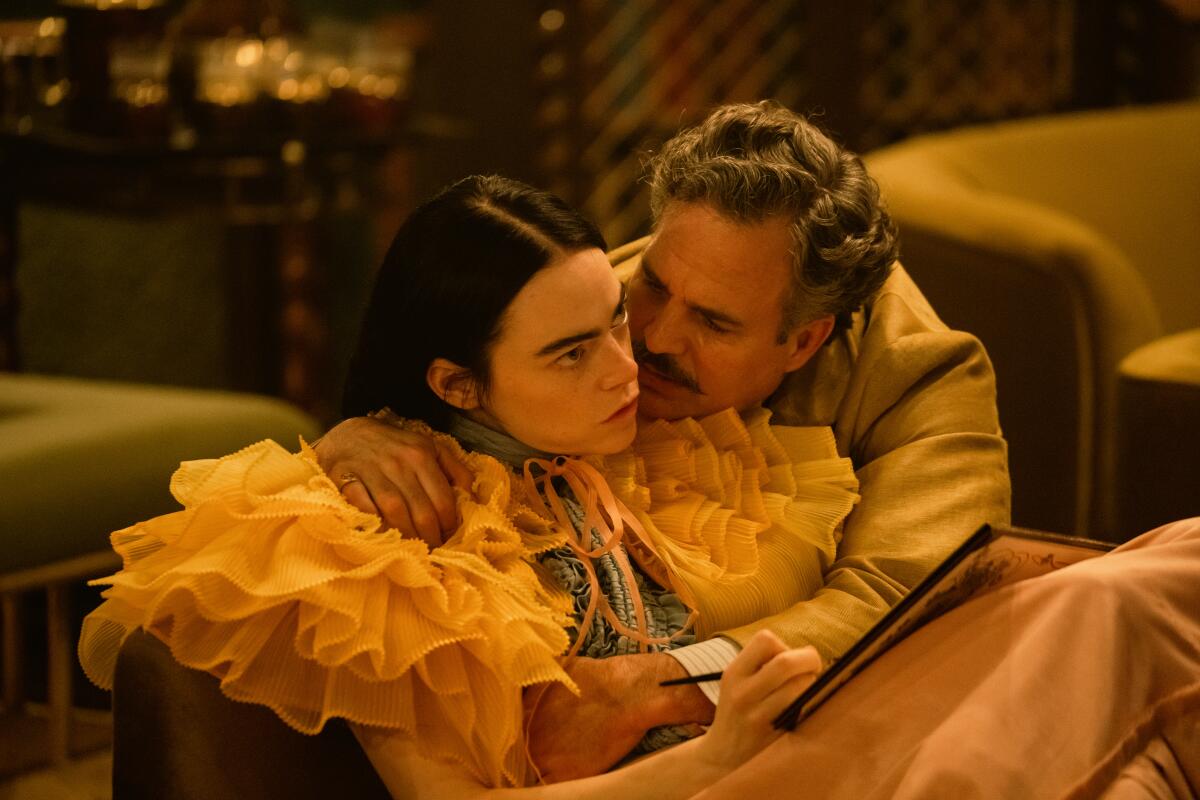
When Duncan (Mark Ruffalo) asks Bella (Emma Stone) to marry him, her reaction ranges from “bewilderment, through what seems like embarrassment or sympathy for Duncan, and finally to complete rejection of him,” says producer Ed Guiney.
(Atsushi Nishijima/Searchlight Images)
Emma Stone, 'Poor Things'
Set the scene: On a ship bound for Athens, an exasperated and possessive Duncan (Mark Ruffalo) asks Bella (Stone) to marry him. Bella stares at him for 17 seconds, trying to absorb her request.
Why it is key: “It's an incredibly tense, intense and hilarious scene as we watch Bella's fascinating and rich reaction as she goes from bewilderment to what seems like embarrassment or sympathy for Duncan and finally to complete contempt for him,” writes producer Ed Guiney in an email. electronic. . “Genius! And a key moment in [Bella’s] self realisation”.

